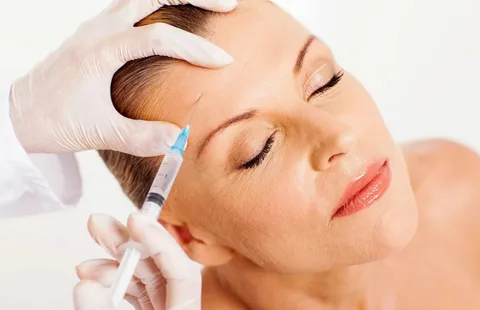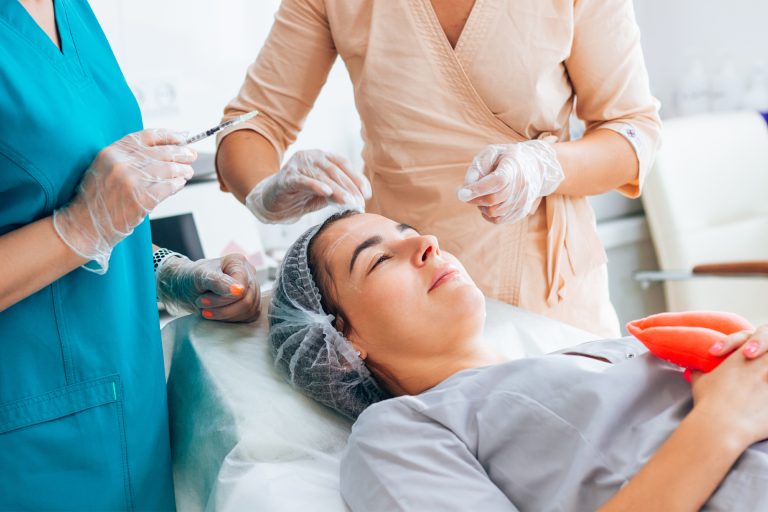You might have seen the beautiful celebrities who never seem to age. The secret is the Botox procedure. After all, pretty young faces suffer from wrinkles and pesky fine lines because of stress, sun exposure, or, let’s face it, just bad genetics. Botox saves the day by giving you a smooth, fresh look without going too far.
You may ask, How long does it last? The effects aren’t endless, but you can keep that young look longer with care. Botox usually lasts three to four months. This can vary depending on your natural facial movements, how often you move your face, and where the treatment will occur.
Whether it’s your first time or you have already taken the sessions, knowing how long Botox lasts can help you plan effectively. In this blog, we’ll delve into how long Botox lasts, the factors that affect its duration, and what to expect during the procedure.
How Botox Works
Botox, also known as Botulinum toxin A, is a treatment that temporarily relaxes specific muscles. It is well known for smoothing wrinkles and fine lines and helping with medical problems. Let’s examine how Botox works in our bodies.
What Cosmetic Issues Can Botox Help With?
Botox is popular for reducing signs of aging, making it a go-to choice for people looking to freshen up their appearance. Botox works by relaxing the facial muscles, which helps soften wrinkles. People usually get it in these areas:
- Eyebrows: It can lift droopy brows slightly, making the eyes look more open.
- Forehead: It works well to lessen the horizontal lines on the forehead that come from repeated facial movements.
- Nose: Botox can also help with those little wrinkles on the sides of the nose, sometimes called bunny lines, especially when you smile.
- Eyes (crow’s feet): This area receives many Botox requests. It softens the fine lines at the outer corners.
- Lips: A Botox lip flip can make your lips look better and soften those lines around your mouth.
- Chin: It can eliminate that dimpled look you get from tense muscles.
- Jawline: Botox can slim your jawline by relaxing the muscles there, and it can also stop you from grinding your teeth.
- Neck: Targeted Botox injections can soften neck bands and lines, giving a younger appearance.
What Medical Conditions Can Botox Help With?
Botox is not just for making us look nice. It also helps with health problems. Doctors use it to treat muscle and nerve issues. Botox stops nerve signals from reaching muscles, easing symptoms significantly. Here are some medical conditions where Botox might help:
- Strabismus (Crossed Eyes): It can relax the muscles that cause crossed eyes and help straighten them out.
- Dystonia: This can reduce unwanted muscle movements, making it easier to move comfortably.
- Hyperhidrosis (Excessive Sweating): Botox blocks the nerves that control sweating, particularly in the armpits, hands, or feet.
- Eyelid Twitching: If you have persistent eye twitching, Botox can help manage that, too.
- Chronic Migraines: Botox is approved for reducing the frequency and severity of migraines in adults.
- Overactive Bladder: It relaxes the bladder muscles, reducing the urge and frequency to urinate.
- Pediatric Upper Limb Spasticity: Botox can help loosen tight muscles in the arms of children with certain nerve disorders.
- Adult Spasticity: It can ease muscle stiffness or tightness due to conditions like stroke or multiple sclerosis.
- Blepharospasm: Botox can stop unwanted blinking or eye closing related to this condition.
- Cervical Dystonia: It helps relieve painful neck muscle contractions and can improve head posture.
How Long Does Botox Last?
Botox can give you good results, but the effects are not permanent. The smooth skin or relief from symptoms usually lasts 3 to 6 months. How long it lasts depends on where you were injected, how your body reacts, and whether you have had Botox.
Duration Based on Treatment Area
The effects of Botox can last different lengths of time in different parts of your body. Here’s a quick breakdown:
- Forehead Lines: Botox for your forehead typically lasts about 4 to 6 months. Since this area doesn’t move as much, the results stick around a bit longer.
- Crow’s Feet (Around the Eyes): The lines near your eyes may return sooner, usually around 3 to 4 months, especially if you smile or squint a lot.
- Jaw and Masseter Muscles: If Botox is used to narrow your jawline or help with teeth grinding, the effects can last up to six months or more, depending on the strength of your muscles.
- Underarms (for sweating): For treating excessive sweating, Botox can last between 6 and 9 months, providing relief to many people.
What Affects the Longevity of Botox Results?
Botox lasts 3-6 months, but it is not the same for everyone. Here’s what affects how long it sticks, so you know what to expect.
Muscle Activity
Botox may fade more quickly if you move your facial muscles frequently, such as when talking, laughing, or expressing emotions. This is especially true for areas around your eyes and mouth. People with stronger muscle tone may also find that the effects wear off faster since it takes more product to keep those muscles relaxed.
Metabolism
Your metabolism matters when it comes to Botox. Botox leaves your system more quickly if your body burns through substances quickly, whether due to being active or having a naturally fast metabolism. On the other hand, people with slower metabolisms often see their results last longer.
Dosage and Units Used
The amount of Botox you get can affect how long it lasts. If you get a smaller dose, the effects may not last as long. Getting the right amount based on your needs can help the Botox last. But getting too much isn’t the way to go either. It’s all about finding a balance, so going to someone experienced in this field is equally essential.
Injection Technique
To get the best Botox results, a good provider must know precisely where and how deep to inject. Getting it right makes the Botox work its best, and the results last. If the injector’s skills aren’t up to par or the location is off, it might not last as long.
Regular Treatments
If you get Botox regularly, you’ll see better results that last longer. Sticking to a schedule can help train your muscles to stay relaxed so that you won’t need touch-ups as often. But if you miss appointments or start and stop treatments, your muscles might regain strength faster, and the Botox won’t last as long.
What to Expect During Botox Treatment
If you are thinking about getting Botox for the first time, it helps to know what’s ahead to calm any worries you might have. The process is quick, generally not painful, and you won’t need any time off afterwards, making it a popular choice for many.
Initial Consultation
Your Botox journey starts with a consultation. Here, your provider will discuss your goals and health concerns. They’ll examine your facial muscles and explain where they will inject the injections.
At Simply You Aesthetics, we deal with our clients with care and love. So, book your consultation today!
The Procedure
The injection part is quick, usually taking about 10 to 20 minutes. Your provider will clean the area and may use numbing cream or ice to make it more comfortable, although most people say it just feels like a tiny pinch.
Using a thin needle, your provider will inject small amounts of Botox into the targeted muscles. You might feel a slight sting or pressure, but it’s quick and doesn’t require anaesthesia.
Aftercare and What to Do Next
Once your treatment is complete, you can resume your regular activities immediately. However, your provider will probably give you some easy tips to follow:
- Avoid rubbing or touching the treated areas for a few hours.
- Stay upright for at least 4 hours after your appointment.
- Avoid intense workouts for the day.
Most people start to see results within 3 to 5 days, and the full effects are typically visible in about 1 to 2 weeks. Your provider might set up a follow-up to check how it’s going and make any necessary tweaks.
Conclusion
Botox isn’t a permanent fix, but it does a good job of smoothing out wrinkles and addressing specific medical issues for several months. Generally, people see results within three to six months, which can vary depending on individual factors such as body type and the area where it’s used. The results last longer if you maintain regular treatments and take good skin care.



